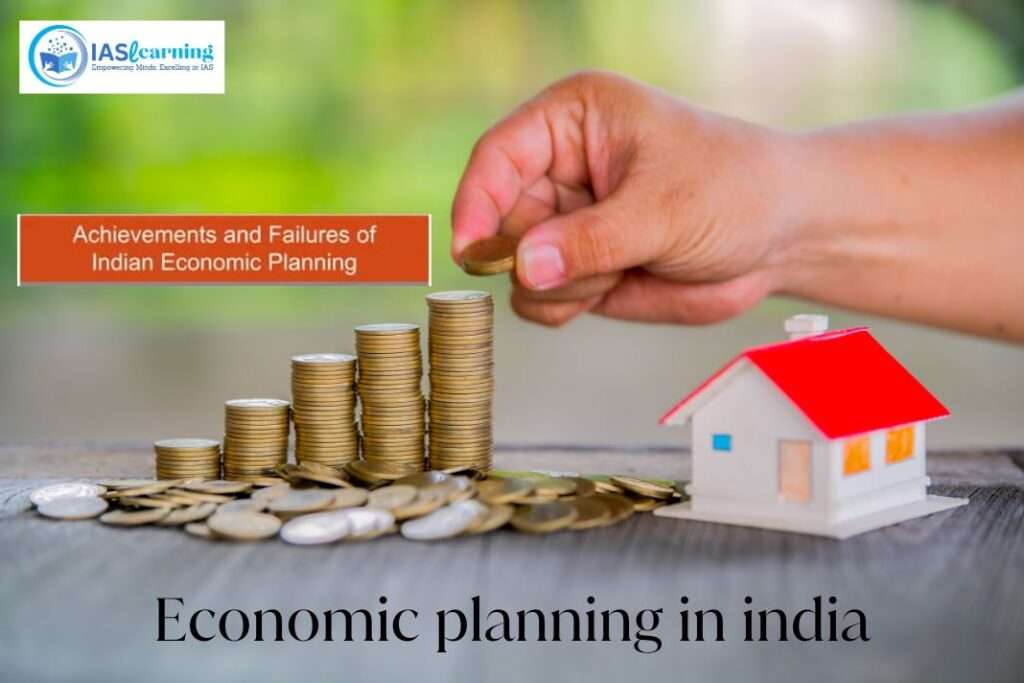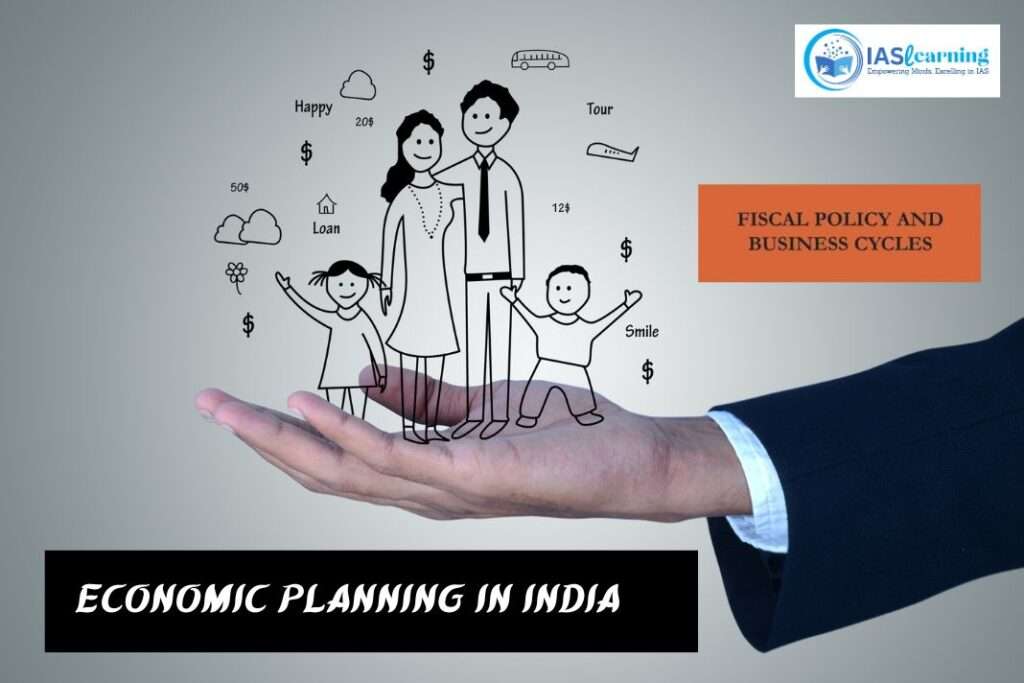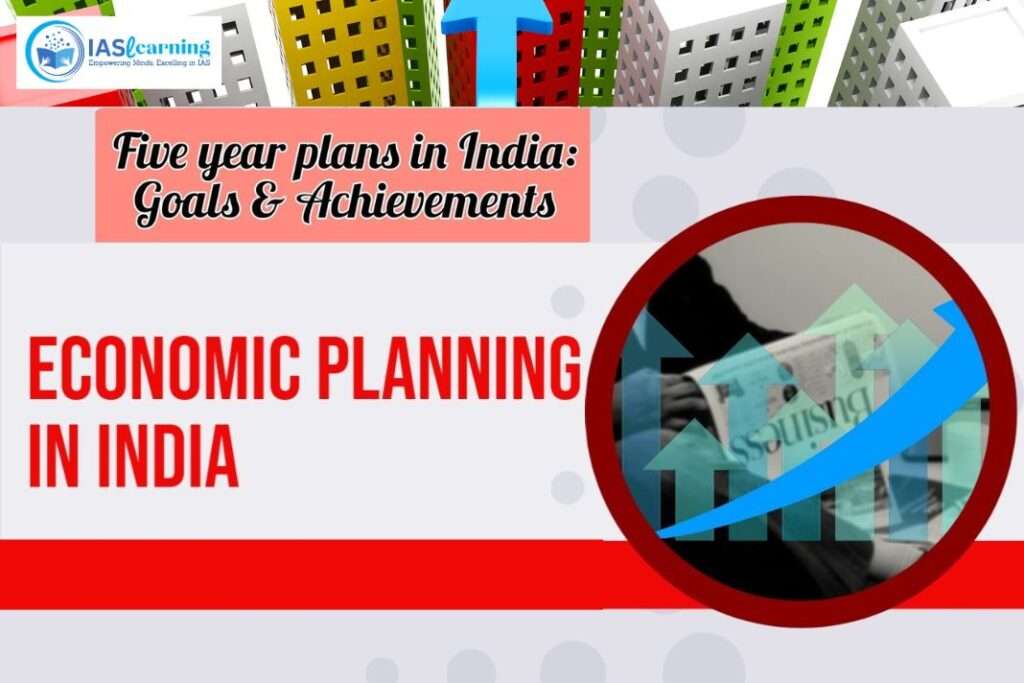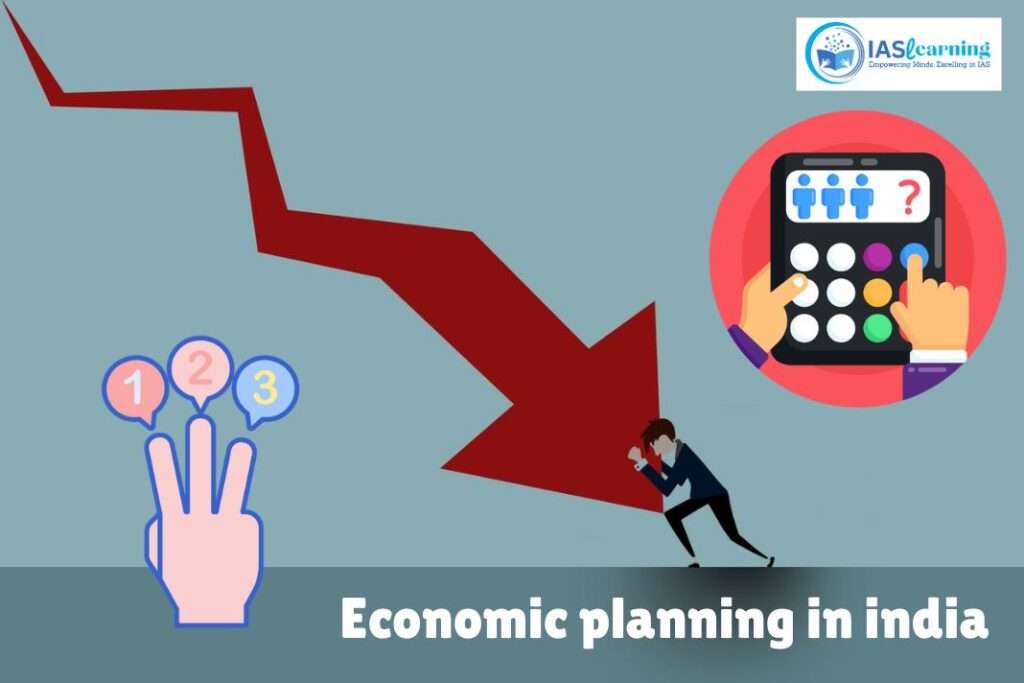Introduction to Economic Planning
Economic planning is a strategic process involving the formulation of goals, resource allocation, and policy implementation to achieve desired economic outcomes. It operates at multiple levels, including national, regional, and local. Once objectives are established, governments and institutions create policies and strategies, such as investing in infrastructure, boosting exports, or enhancing education and healthcare access. These plans are executed through various programs and initiatives.
The effectiveness of economic planning hinges on several factors, including resource availability, policy efficacy, and the capability of implementing institutions. In many countries, economic planning follows a series of Five-Year Plans, periodically adapted to align with evolving economic priorities and conditions.
Economic planning refers to the process in which a government or organization makes deliberate decisions about priorities and resource allocation to achieve specific goals. This planning involves making predictions, formulating rules and policies to regulate the economy, and determining how to utilize financial resources effectively. The primary aim of economic planning is to facilitate sustainable and long-term growth and improvement in the economy.

Objectives of Economic Planning in India
Economic planning in India has been an integral part of the country’s development strategy since gaining independence in 1947. The key objectives of economic planning in India are as follows:
- Economic Growth: One of the central goals of economic planning in India is to foster economic growth, typically measured by an increase in Gross Domestic Product (GDP). This involves boosting the production and consumption of goods and services, creating employment opportunities, and reducing poverty.
- Poverty Reduction: Economic planning seeks to alleviate poverty by generating employment, enhancing workforce productivity, and providing essential necessities to those in need.
- Self-Sufficiency: India’s economic planning has aimed to achieve self-sufficiency, particularly in crucial sectors such as food production, energy, and defense. This is pursued through the promotion of domestic manufacturing, reducing dependence on imports, and supporting indigenous research and development.
- Social Justice and Equity: Economic planning endeavors to promote social justice and equity by ensuring that the benefits of economic growth are distributed equitably across all segments of society.
- Regional Development: Economic planning seeks to promote regional development by addressing regional imbalances and fostering the growth of underdeveloped areas. Infrastructure development, incentives, and subsidies are utilized to stimulate industrialization and economic progress in these regions.
- Employment Generation: Given India’s sizable and expanding population, economic planning focuses on creating new job opportunities, particularly in the manufacturing and services sectors, and encourages entrepreneurship and self-employment.
- Reducing Regional Disparities: India exhibits significant regional disparities in terms of income, infrastructure, and access to basic services. Economic planning aims to mitigate these disparities by channeling resources into underdeveloped regions and advancing balanced regional development.
- Balanced Regional Development: Another objective of economic planning is to ensure that development benefits reach all parts of the country. This is achieved by investing in infrastructure, establishing industries in less developed areas, and promoting entrepreneurial activities.
- Improved Standard of Living: Economic planning endeavors to enhance the standard of living for the population by fostering economic growth and providing access to fundamental amenities such as healthcare, education, and housing.

Types of Economic Planning in India
- Planning by Direction and Planning by Inducement:
- Planning by Direction: In this approach, the government directly controls and directs the allocation of resources and the production of goods and services. It involves central planning and state intervention in economic activities.
- Planning by Inducement: This type of planning encourages private investment and entrepreneurship through incentives, market-oriented policies, and minimal government interference.
- Financial Planning and Physical Planning:
- Financial Planning: Focuses on the allocation of financial resources, including budgeting, taxation, and fiscal policies.
- Physical Planning: Concentrates on the allocation of physical resources such as land, water, minerals, and infrastructure development.
- Indicative Planning and Imperative Planning:
- Indicative Planning: Provides guidelines, targets, and recommendations for the private sector and market forces to follow. It relies on market mechanisms and voluntary compliance.
- Imperative Planning: Involves mandatory regulations, controls, and directives to achieve specific economic and social goals. The government plays a more active role in resource allocation.
- Rolling Plans and Fixed Plans:
- Rolling Plans: Flexible plans that are periodically reviewed and revised, typically on an annual basis, to adapt to changing economic conditions and priorities.
- Fixed Plans: Plans with a predetermined duration and specific targets that are not subject to mid-term revisions.
- Centralized Planning and Decentralized Planning:
- Centralized Planning: Involves the central government taking the lead in the planning and implementation process. It often features a top-down approach.
- Decentralized Planning: Devolves planning and implementation responsibilities to lower levels of government, such as state governments, districts, and local bodies. It encourages local participation and tailoring of plans to regional needs.
Economic Planning in the Indian Constitution: Economic planning falls under the Concurrent List in the Indian Constitution. Both the central government and state governments have the authority to make laws related to economic planning. However, the primary responsibility for economic planning lies with the Union government. State governments can participate in the planning process and implement plans within their respective jurisdictions.
The Constitution of India divides legislative powers into three lists: Union, State, and Concurrent. Economic planning is included in the Concurrent List (List III) of the Seventh Schedule. This arrangement allows both the central and state governments to make laws and policies pertaining to economic planning, ensuring cooperation and coordination in this crucial area of governance.

Features of Economic Planning
- Infrastructure Development: Economic planning in India emphasizes the creation and advancement of modern infrastructure. This includes the development of better roads, railways, hydro projects, and other critical elements of the country’s infrastructure.
- Education Sector Development: Economic plans also aim to contribute to the growth and improvement of the education sector. Investments in education are considered essential for human capital development and long-term economic progress.
- Objective Identification: Economic planning primarily focuses on identifying key objectives that need to be achieved to promote economic growth and social development. These objectives are determined based on the specific needs and priorities of the country.
- Resource Allocation: One of the fundamental features of economic planning in India is the allocation of resources. Planning involves deciding how available resources, such as capital, labor, and natural resources, should be distributed and utilized efficiently.
- Realistic Target Setting: Economic planning sets realistic and measurable targets for various sectors of the economy. These targets provide a framework for monitoring progress and assessing the effectiveness of policies and strategies.
Need for Economic Planning in India
The need for economic planning in India emerged as a critical requirement after the country gained independence. Several factors contributed to this necessity:
- Post-Independence Challenges: After gaining independence from British colonial rule, India faced significant economic challenges. The economy was handicapped due to colonial exploitation and needed substantial reconstruction.
- Resource Utilization: India needed a systematic approach to make the most effective and balanced use of its resources. Economic planning was seen as the means to achieve this by allocating resources efficiently.
- Prioritization: Economic planning allowed the government to identify and prioritize key areas of development, such as industrialization, agriculture, and infrastructure, based on the country’s needs and circumstances.
- Five-Year Plans: The establishment of the Planning Commission in 1950 marked the formalization of economic planning in India. The centralized and integrated national economic plans, known as Five-Year Plans, were formulated at regular intervals to guide the country’s development.
- Transition to NITI Aayog: The Planning Commission was replaced by NITI Aayog in 2015, under the leadership of Prime Minister Narendra Modi. This transition reflected a changing approach to economic planning, emphasizing cooperative federalism and a more decentralized decision-making process.
The architect of Indian Economic Planning is Mokshagundam Vishweswaraiah, also known as Sir M. Vishweswaraiah. He was a distinguished Indian engineer, statesman, and scholar who played a pivotal role in shaping India’s economic planning and development. Sir M. Vishweswaraiah made significant contributions, particularly in the fields of irrigation, agriculture, and education. He served as a member of the Planning Commission of India and was instrumental in formulating the First Five Year Plan, which was implemented in 1951.
His notable contributions to India’s development and economic planning were widely acknowledged, and he received numerous honours, including the Bharat Ratna, India’s highest civilian award, in 1955.

As for the role of NITI Aayog in economic planning
NITI Aayog, the National Institution for Transforming India, is a policy think tank of the Government of India established in 2015. It replaced the Planning Commission, which was initially formed after India’s independence to undertake the task of economic planning. NITI Aayog has a dual objective:
- Achieving Sustainable Development Goals: NITI Aayog focuses on formulating policies and strategies to achieve sustainable development goals (SDGs). It plays a crucial role in aligning India’s development agenda with global sustainability targets.
- Enhancing Cooperative Federalism: NITI Aayog promotes cooperative federalism by fostering collaboration and consultation between the central government and state governments. It follows a bottom-to-top approach, involving states in the decision-making process and encouraging them to take the lead in designing and implementing development initiatives.
In essence, NITI Aayog represents a modern approach to economic planning in India, emphasizing flexibility, inclusiveness, and a cooperative spirit among various stakeholders to drive the country’s economic and social progress.
Achievements of Economic Planning in India
- Economic Growth: Economic planning in India succeeded in significantly boosting economic growth. Productivity in both industrial and agricultural sectors increased, leading to higher per capita income and national income.
- Infrastructure Development: Over time, India was able to create essential infrastructure, including irrigation and hydroelectric projects, improved road networks, and expanded railway systems. This infrastructure development has facilitated economic activities and connectivity.
- Education Advancement: Economic planning led to a substantial increase in the enrollment of children in schools, colleges, and universities. This has contributed to the development of a more educated and skilled workforce.
- Advancement in Science and Technology: Economic planning fostered the growth of technical skills and the development of a skilled workforce. India was also able to send technical experts to other countries, showcasing its expertise in various fields.
- Expansion of Foreign Trade: Due to increased industrialization, there was a notable rise in the export of manufacturing and engineering goods. This expansion of foreign trade has contributed to India’s economic growth and global presence.
Failures of Economic Planning in India
- Poverty and Inequality: Economic planning, while making progress, has not completely eradicated poverty and inequality in India. These challenges continue to persist, albeit with some reduction.
- Unemployment: Despite creating employment opportunities, economic planning has not been able to fully address the issue of unemployment. A significant portion of India’s workforce still faces unemployment, with an unemployment rate of 6.6% reported.
- Corruption and Black Money: Economic planning has not been entirely successful in eliminating corruption and curbing the generation of black money in the country. These issues remain areas of concern.
- Inflation: Economic planning has not completely resolved the problem of inflation, particularly in the prices of essential goods. Inflation continues to affect consumers, even after several decades of planning and development efforts.
While economic planning in India has achieved notable successes, it has also faced persistent challenges that require ongoing attention and innovative solutions to create a more inclusive and equitable economy.
(FAQs) on Economic Planning
- What is Economic Planning?
- Economic planning involves the systematic process of setting objectives, allocating resources, and implementing policies and strategies to achieve specific economic and social goals.
- Why is Economic Planning Important?
- Economic planning is crucial for guiding a country’s development, promoting economic growth, reducing poverty and inequality, and ensuring the efficient use of resources.
- What Are the Main Objectives of Economic Planning?
- The primary objectives of economic planning typically include promoting economic growth, reducing poverty, ensuring equitable distribution of resources, and achieving sustainability.
- How Does Economic Planning Benefit a Country?
- Economic planning can benefit a country by fostering economic development, improving infrastructure, enhancing education and healthcare, and creating job opportunities.
- What Are the Different Types of Economic Planning?
- Economic planning can be categorized based on factors like approach (indicative or imperative), focus (financial or physical), and scope (centralized or decentralized).
- Who Were the Key Architects of Economic Planning in India?
- Mokshagundam Vishweswaraiah and Jawaharlal Nehru played significant roles in the early stages of economic planning in India.
- What Are Some Achievements of Economic Planning in India?
- Achievements include economic growth, infrastructure development, progress in education, advances in science and technology, and expansion of foreign trade.
- What Are Some Challenges Faced by Economic Planning in India?
- Challenges include persistent poverty and inequality, unemployment, corruption, and inflation.
- How Has Economic Planning Evolved in India Over the Years?
- Economic planning in India has evolved from centralized, five-year plans to a more decentralized and flexible approach with the establishment of NITI Aayog.
- What Is the Role of NITI Aayog in Economic Planning in India?
- NITI Aayog focuses on achieving sustainable development goals and enhancing cooperative federalism, involving states in the planning and development process.
- How Can Citizens Contribute to Economic Planning?
- Citizens can contribute by participating in the democratic process, providing feedback on policies, and supporting initiatives that align with the country’s economic goals.
- Is Economic Planning a Continuous Process?
- Yes, economic planning is an ongoing and dynamic process that adapts to changing economic conditions and priorities.
